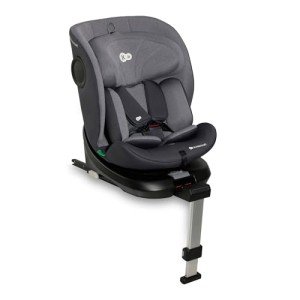So , You've Bought Pushchair ... Now What?

Understanding Prams and Pushchairs: A Comprehensive Guide for Parents
When it concerns picking the best mode of transport for youngsters, moms and dads are often overwhelmed by the variety of alternatives offered. Prams and pushchairs are among the most typical options, and each has its own unique functions dealing with various requirements. This short article dives deep into the world of prams and pushchairs, detailing their distinctions, benefits, drawbacks, and suggestions for choosing the right one for your household.
What is the Difference Between a Pram and a Pushchair?
At very first glimpse, prams and pushchairs may appear comparable, however they serve various functions based upon a child's age and developmental phase. Below are the main distinctions:
| Feature | Pram | Pushchair |
|---|---|---|
| Age Range | Usually for newborns approximately 6 months | Suitable for children 6 months and older |
| Design | Flat, horizontal lying position for newborns | Upright seating position; more versatile and mobile |
| Use | Mainly for walking with babies | May consist of multiple seating alternatives and configurations |
| Foldability | Often bulkier and less portable | Normally lightweight and foldable for easy transport |
Types of Prams and Pushchairs
Choosing the ideal pram or pushchair can depend upon numerous elements, including the type, functions, and way of life of the family. Below are the main types of prams and pushchairs readily available in the market:
Prams
- Traditional Prams: Designed for newborns, they frequently include a deep and comfortable bassinet, making them perfect for young infants.
- Travel System Prams: These can shift from a bassinet to a toddler seat, often including a baby safety seat for ease of travel.
Pushchairs
- Standard Pushchairs: Offer an upright seat and are ideal for older babies and toddlers. They often include reclining abilities.
- Umbrella Pushchairs: Lightweight and highly portable, these models fold compactly, making them ideal for travel.
- All-Terrain Pushchairs: Designed for rugged landscapes, they feature larger wheels and remarkable suspension systems for off-road capabilities.
Advantages and Disadvantages
Advantages of Prams
- Comfort for Newborns: Their flat, horizontal style is ideal for the healthy spine development of babies.
- Stylish Designs: Many prams featured sophisticated visual appeals, attracting fashion-forward parents.
- Large: They tend to use a larger space for infants to move comfortably.
Drawbacks of Prams
- Bulkiness: They can be heavy and difficult to steer, making them less practical for public transport or crowded spaces.
- Expense: Prams normally feature a greater price compared to pushchairs.
Advantages of Pushchairs
- Mobility: Many pushchairs fold compactly and are lightweight, offering remarkable benefit for moms and dads on the go.
- Flexibility: With multiple setups readily available, pushchairs can match various stages of a kid's growth.
- Easier to Store: Their smaller size makes them simpler to keep in compact areas.
Downsides of Pushchairs
- Less Comfort for Newborns: Most standard pushchairs are inappropriate for extremely young infants unless developed with a reclining function.
- Sturdiness Concerns: Budget pushchairs might not endure comprehensive use compared to sturdier pram models.
Tips for Choosing the Right Pram or Pushchair
Selecting the ideal pram or pushchair requires careful consideration. Here are some crucial elements to remember:
- Age Appropriateness: Consider your child's age. A pram may be better for a newborn, while a pushchair may be chosen for an older child.
Way of life Compatibility:
- If you regularly travel or use public transportation, a light-weight alternative might be more convenient.
- For active households who delight in outside activities, a durable, all-terrain pushchair could be advantageous.
Storage Needs:
- Think about where you'll save the pram or pushchair, as some models can take up considerable space.
- Budget plan Constraints: Prams can be pricey, particularly designer designs. Determine functions that are essential to you before buying.
- Safety Features: Always search for important safety functions like straps, brakes, and durability when choosing a pram or pushchair.
Frequently asked questions
1. At what Prams And Pushchairs For Newborns can my baby start using a pushchair?
Many pushchairs are appropriate for babies from 6 months, but some convertible models can safely accommodate younger infants when utilized with a safety seat or bassinet attachment.
2. Can I take a pram or pushchair on public transportation?
Many public transportation systems accommodate prams and pushchairs, but it's a good idea to examine specific policy standards ahead of time.
3. How can Suggested Reading maintain my pram or pushchair?
Regular cleansing, looking for wear and tear, and lubricating moving parts will assist in keeping your pram or pushchair's performance and durability.
4. Are travel systems worth the financial investment?
Travel systems can be a great investment for moms and dads who regularly travel, providing an all-in-one option from vehicle to stroller. They offer convenience and ease of shift, specifically for new parents.
5. Exist prams and pushchairs with extra functions?
Yes, many modern designs include features like cup holders, storage baskets, adjustable handles, canopies for sun shading, and even folding mechanisms that can be run with one hand.
Picking in between a pram and a pushchair is a choice that affects day-to-day parenting routines. By comprehending Best Prams , benefits, and suitable choices, families can make educated options that balance with their lifestyle needs. Whether it's a leisurely stroll in the park with a pram or a daring outing with an all-terrain pushchair, the best choices often cause cherished memories and satisfying experiences for both parents and children.

